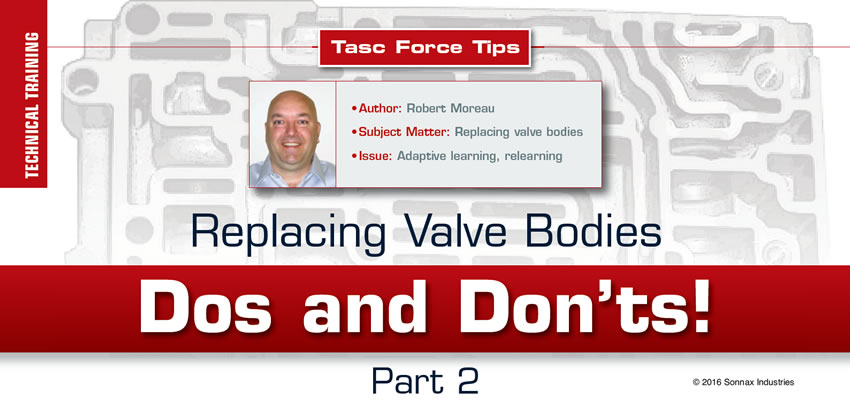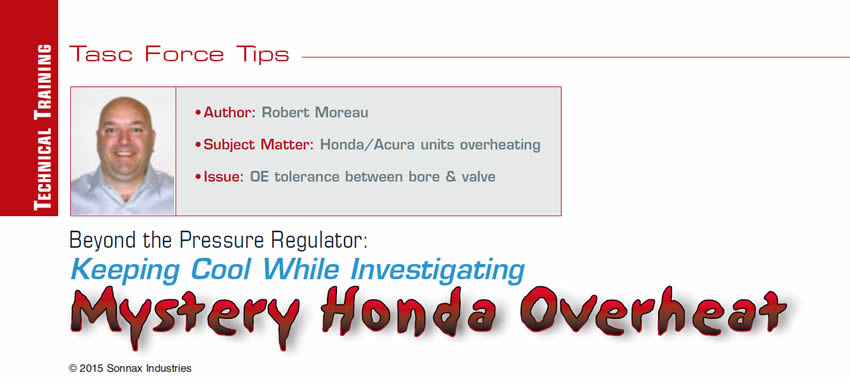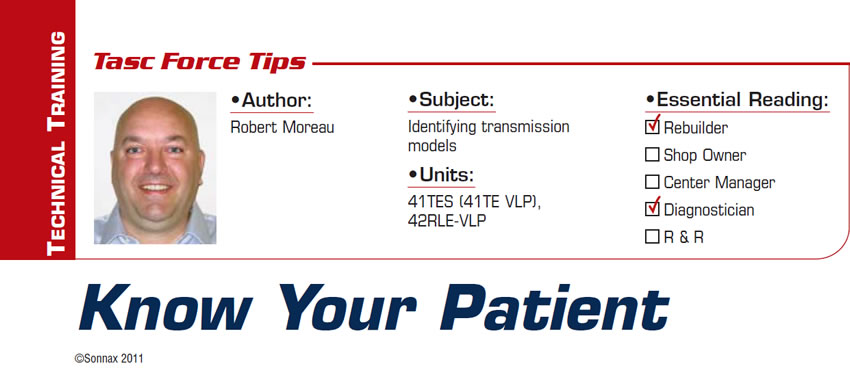Replacing Valve Bodies Dos and Don’ts: Part 2
I would like to go over some basic (yet very important) things that need to be done when replacing the valve body. I’ll also touch on some things that need to be done during the initial road test to help ensure everything goes as smoothly as possible.

Replacing Valve Bodies Dos and Don’ts!
When you replace the valve body instead of rebuilding it, on one hand you gain by getting a valve body that has been refurbished with oversized valves, remanufactured or new solenoids, and tested to ensure it is working as designed. On the other hand, you don’t get the benefit of taking the original valve body apart to vacuum test bores, assess wear or find sticking valves or solenoids, and disintegrated checkballs and so on. You may even miss a host of other useful hints that can help explain why the transmission had the symptoms it came in with.

Beyond the Pressure Regulator: Keeping Cool While Investigating Mystery Honda Overheat
Most transmission technicians are aware of the notorious loss of proper converter feed that plagues various Honda transaxles. For those who are less familiar, converter charge oil is cut because there is not enough pump output to keep the pressure regulator valve in the regulating position, allowing the TCC to drag and eventually disintegrating the lining. Many technicians have already learned the importance of installing a modified pressure regulator valve during overhaul that ensures converter charge pressure is available at all times, regardless of pressure regulator valve position.

Know Your Patient
One would think the easiest part about working on transmissions would be identifying the model you are working on. Nowadays, unfortunately, it’s not always that easy. I was helping via e-mail a technician on a transmission forum who reported having issues reaming a late-model Chrysler FWD valve body. Both he and I were thinking 41TE (A604), but that turned out to be incorrect. What he was working on was actually a 41TES, also known as 41TE VLP.

